Eyes Wide Shut, the last film directed by Stanley Kubrick, is a complex narrative that explores themes of desire, jealousy, fidelity, social masks, and the darkness beneath human facades. Based on Arthur Schnitzler’s novella Traumnovelle (or Dream Story), the film takes viewers on a journey that is both literal and psychological, blurring the lines between fantasy and reality.
The phrase “Not Everyone Can Confront Reality” suggests that the full, unfiltered truth of life—its complexities, uncertainties, and darker aspects—can be overwhelming or even unbearable for most people. Often, we construct comforting illusions, adopt social facades, or focus on distractions to avoid confronting difficult or uncomfortable truths about ourselves and the world.
The idea implies that facing the full intensity of reality without any illusions would be too difficult, so people find ways to shield themselves from it, consciously or subconsciously, to navigate their lives with more ease. In a broader sense, it suggests that everyone relies on some form of coping mechanism, whether it’s through relationships, work, beliefs, or fantasies, to make the rawness of life more manageable.
Who was Stanley Kubrick?
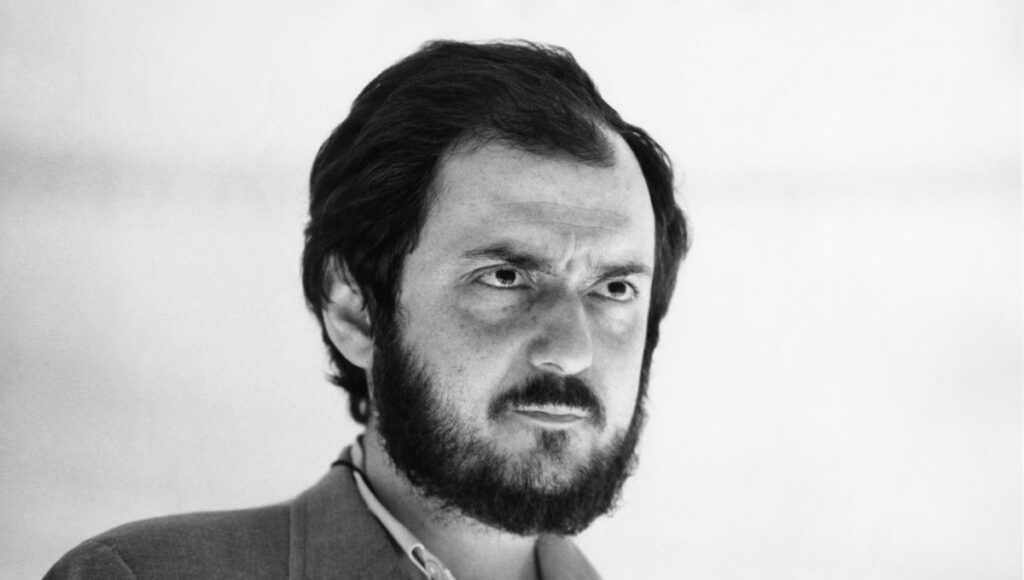
Stanley Kubrick (1928–1999) was an American filmmaker widely regarded as one of the most influential directors in cinema history. Known for his meticulous attention to detail, groundbreaking visuals, and exploration of complex themes, Kubrick created films across various genres, each marked by a unique, often unsettling atmosphere and a deep exploration of human psychology.
Some of his most acclaimed works include 2001: A Space Odyssey (1968), a visionary science fiction film that redefined the genre; A Clockwork Orange (1971), a dark social satire on violence and free will; The Shining (1980), a chilling horror masterpiece; and Eyes Wide Shut (1999), an exploration of desire and hidden social realms.
Kubrick was also known for his perfectionism and reclusive nature, often demanding numerous takes to capture a scene exactly as he envisioned it. His films, though varied in style, consistently challenged viewers to confront moral ambiguity, human nature, and the limits of knowledge, earning him both critical acclaim and a lasting impact on cinema.
A few words on Eyes Wide Shut
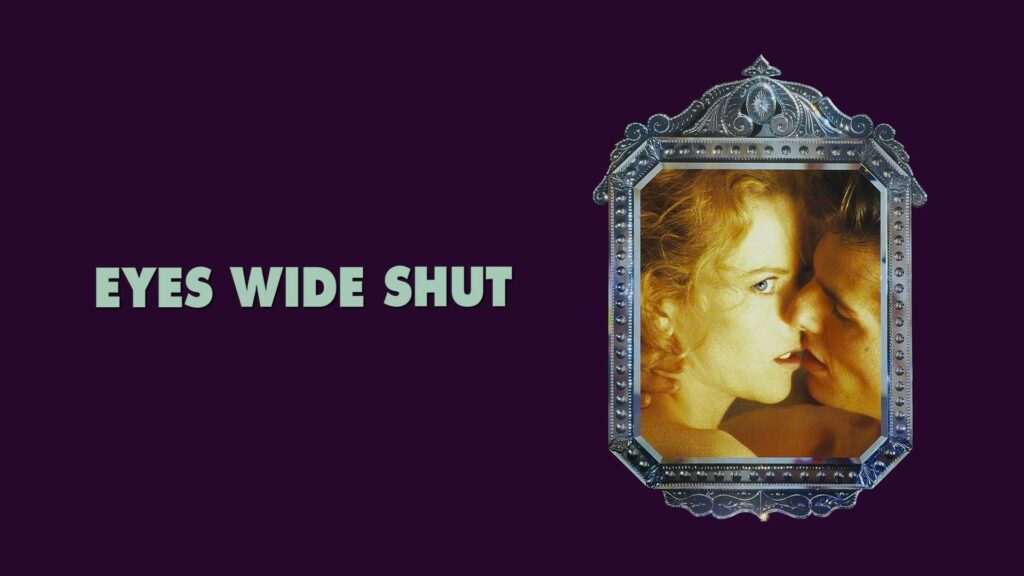
Eyes Wide Shut is a challenging movie to watch precisely because it confronts the viewer with the unsettling realities hidden beneath the surface of everyday life, relationships, and social norms. Directed by Stanley Kubrick, the film explores themes of secrecy, desire, infidelity, and the masks we wear to hide our true selves and emotions, often from our closest partners.
The story follows Dr. Bill Harford, who, after learning of his wife Alice’s fantasy about another man, embarks on a disturbing journey through a world of sexual intrigue and hidden desires that ultimately reveals the fragility of his marriage, his ego, and the nature of reality itself.
The themes
1. Desire and Fantasy vs. Reality
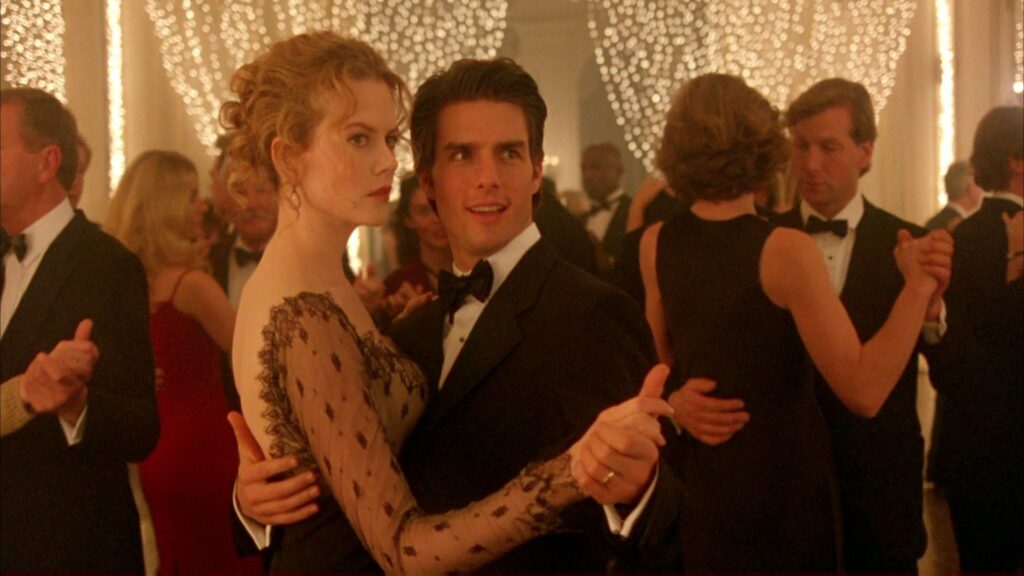
At its core, Eyes Wide Shut examines how suppressed desires can affect relationships and personal identity. When Alice (Nicole Kidman) reveals to her husband, Bill (Tom Cruise), that she once considered abandoning him for a stranger, it destabilizes Bill, leading him into a spiral of jealousy and self-doubt.
Bill’s journey that night symbolizes his attempt to confront the hidden aspects of his psyche and to explore desire in ways he had previously repressed. However, his experience is a reminder that fantasy often holds a deceptive allure, while the reality of our desires can be darker and more dangerous than expected.
2. Masks and Social Facades

The masks worn at the secret society party in Eyes Wide Shut symbolize the facades people wear daily to conform to societal expectations and conceal their true selves. These masks are a powerful visual metaphor for how individuals, regardless of their social status, often hide their innermost thoughts, desires, and darker impulses.
Kubrick suggests that beneath these outward personas lies a hidden vulnerability common to all, a shared reality where everyone carries secrets, whether metaphorical or literal. The masks, therefore, not only represent the distance between the public and private self but also reflect the universal human tendency to shield the truth and protect oneself from exposure, highlighting the complex nature of identity and the darkness that lies beneath the surface.
3. Power and Class Distinctions
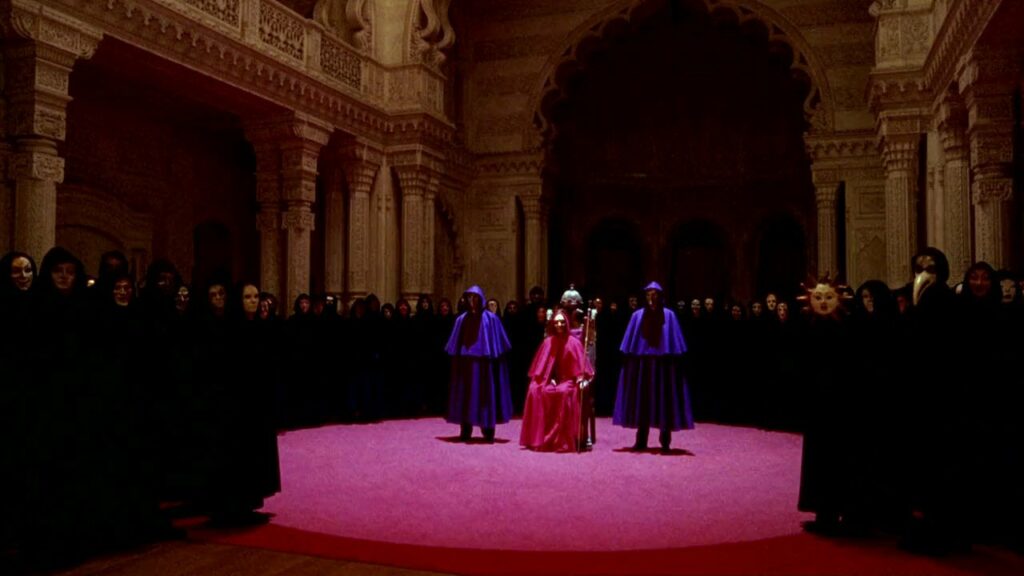
The film also comments on how wealth and power give certain individuals access to worlds and pleasures that are out of reach for others. The party Bill stumbles upon is exclusive, and the attendees appear to be influential figures, indulging in unbridled desires with no apparent consequences.
This is a powerful reminder of the corruption and moral compromises that can arise when people are insulated by wealth and influence. Bill’s glimpse into this world leaves him feeling even more alienated and insecure about his place in society.
4. Moral Flexibility Fuels Power and Wealth
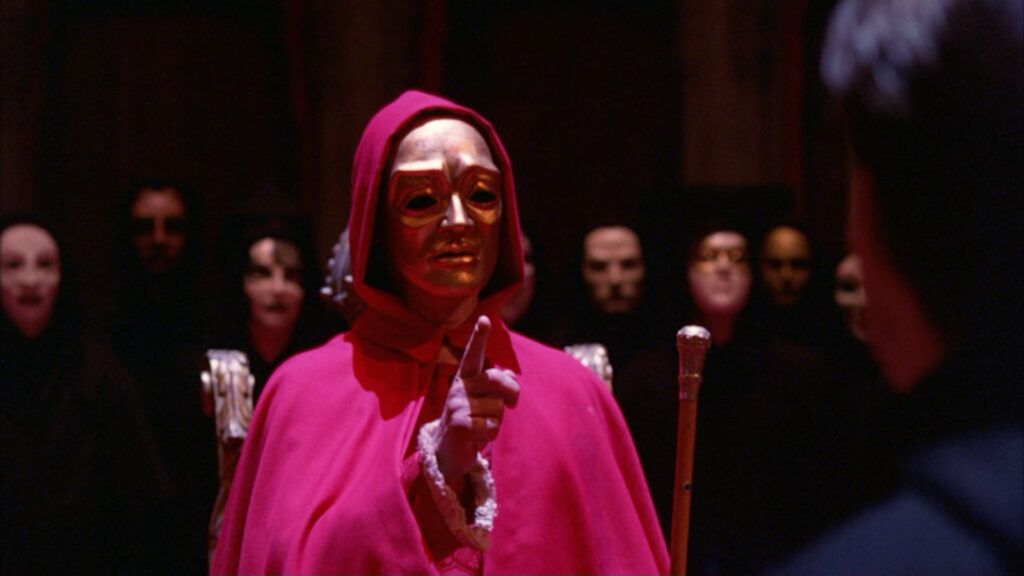
People who reach high levels of power and wealth often embrace moral relativism—the idea that moral principles are flexible and context-dependent. In high-stakes fields like corporate leadership or politics, this flexibility can be a strategic asset, helping individuals navigate complex situations where strict ethical adherence may be impractical.
This relativistic approach can justify decisions that favor personal or organizational gain over universal ethical norms, with powerful individuals often facing fewer consequences for morally ambiguous actions. While moral relativism can foster nuanced ethics, it also blurs boundaries, allowing advancement in systems that value adaptability over fixed values.
5. Limiting Moral Boundaries
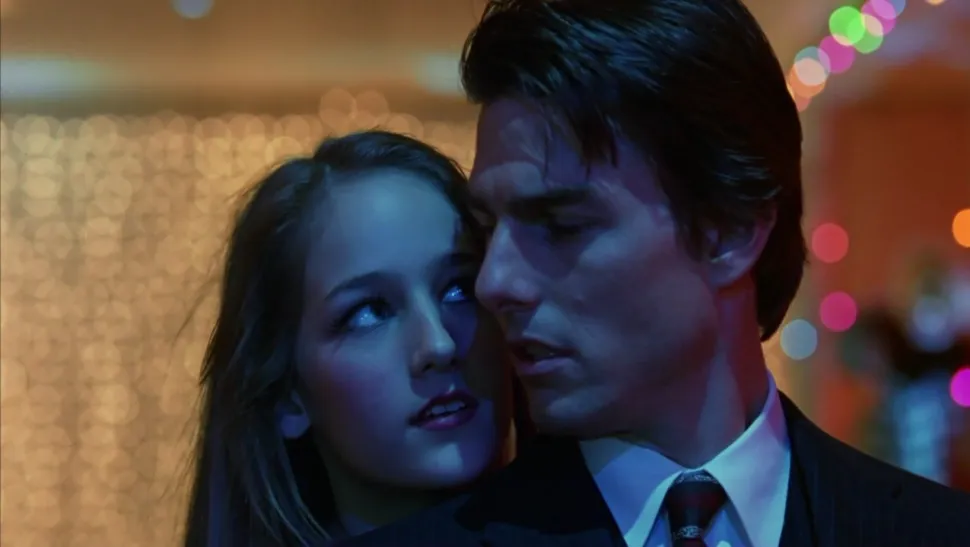
In Eyes Wide Shut, Bill’s inability to fully cross into the secretive world he encounters symbolizes the limits of desire, control, and social boundaries. Though he is tempted by the allure of hidden power and indulgence, he remains an outsider, kept at bay by warnings and threats from those who hold real authority in this forbidden space.
His thwarted journey highlights the dangers of unchecked curiosity and the restrictive nature of societal hierarchies, revealing that, despite his status, certain realms are inaccessible and perhaps perilous to pursue for ordinary people unprepared and unable to confront the abyss.
6. The Existence of Secret Societies
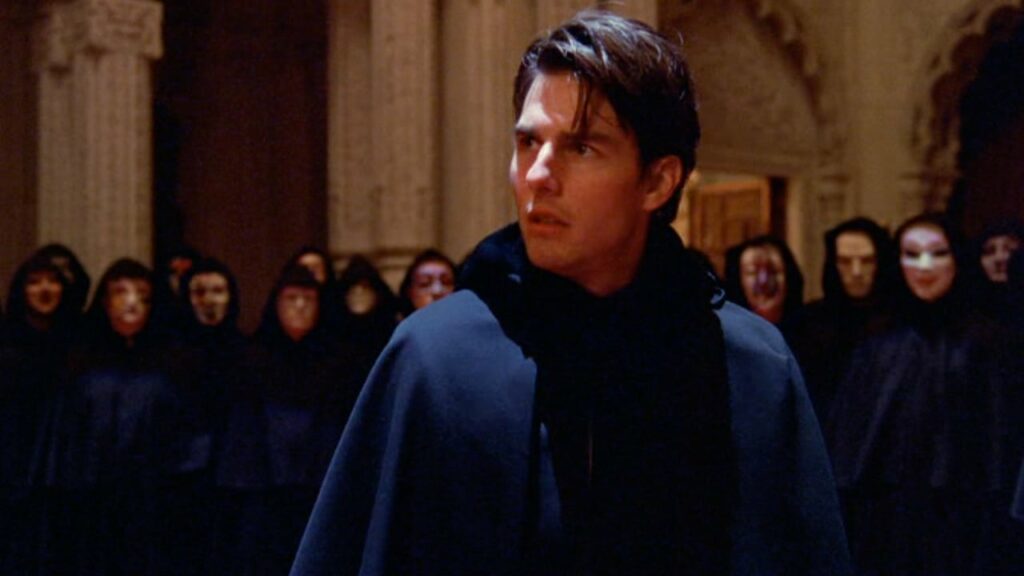
Elite societies often maintain secrecy to avoid scrutiny from the general population, which typically adheres to more rigid moral frameworks. In these circles, decisions are guided by flexible ethical principles prioritizing power and personal gain, which would likely provoke moral outrage if exposed.
The general public, unable to adopt moral relativism, would see such actions in terms of right and wrong. By staying hidden, elites can navigate complex moral landscapes without societal constraints, preserving their power and avoiding judgment.
7. Infidelity, Fidelity, and Marital Trust

Eyes Wide Shut delves deeply into the complexities of marital dynamics, particularly the themes of fidelity, trust, and desire. The tension between Bill and Alice, as they navigate their individual longings and their mutual fear of betrayal, underscores the fragility of even the most seemingly stable relationships when faced with temptation.
Kubrick illustrates how the boundaries between love and lust blur, revealing how easily trust can be fractured. The film suggests that while trust is foundational to love, it is also inherently fragile, and maintaining it requires confronting uncomfortable truths about one’s own desires, vulnerabilities, and the darker aspects of intimacy. Ultimately, it portrays love as a delicate balance that demands honesty and self-awareness, yet remains vulnerable to the complexities of human nature.
8. Confronting One’s Inner Darkness
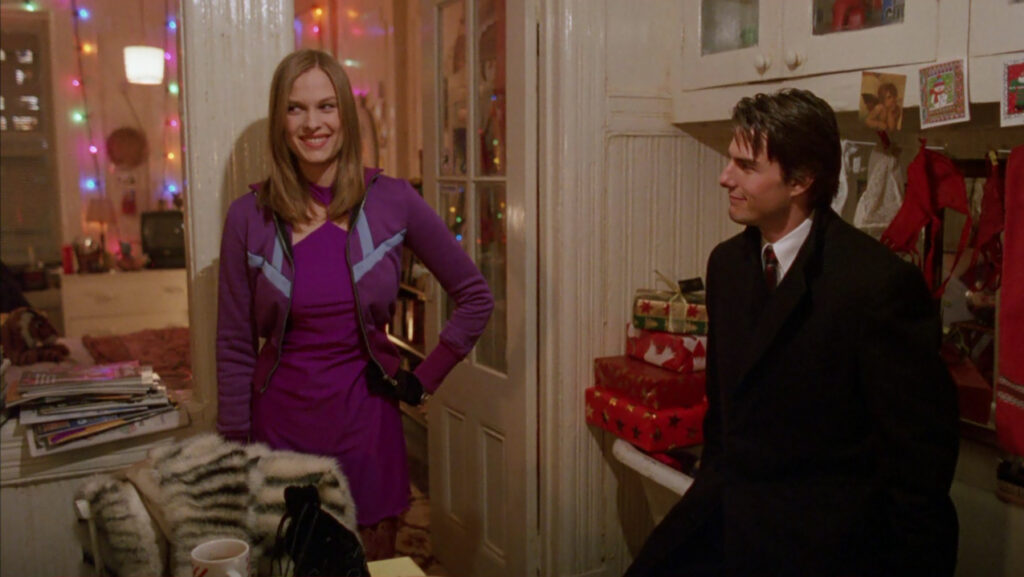
The night journey that Bill embarks on functions as a psychological odyssey, pushing him to confront hidden aspects of his own psyche that he’s never fully acknowledged. Kubrick frames this experience as a “waking nightmare,” a surreal sequence of events that unravel Bill’s sense of self and destabilize his previously held beliefs.
As Bill ventures deeper into a world that challenges his perceptions of morality and desire, the journey becomes not only a personal reckoning but also an invitation for viewers to examine the boundaries of their own desires and the moral lines they are willing to cross.
9. Eyes Wide Shut: Seeing vs. Perceiving

The title Eyes Wide Shut presents a paradox—being able to see, yet intentionally choosing not to perceive reality in its entirety. This duality reflects the internal struggle that many people face between confronting the darker truths of life and maintaining the comforting illusions that shield them from discomfort.
Kubrick uses this tension to question whether individuals truly see the world around them, or if they instead live in self-imposed ignorance, deliberately keeping their “eyes wide shut” to the unsettling aspects of existence that challenge their sense of safety and control. This theme explores the tension between awareness and denial, forcing us to reflect on how much of reality we are willing to confront.
Comparing men from Alice point of view

Comparing Sándor Szávost, Bill Harford, and the Sailor from Eyes Wide Shut reveals stark contrasts in their relationships with power, morality, and the consequences of their desires, each of whom occupies a different role in the narrative’s exploration of human nature.
1. Sándor Szávost: The Power Broker
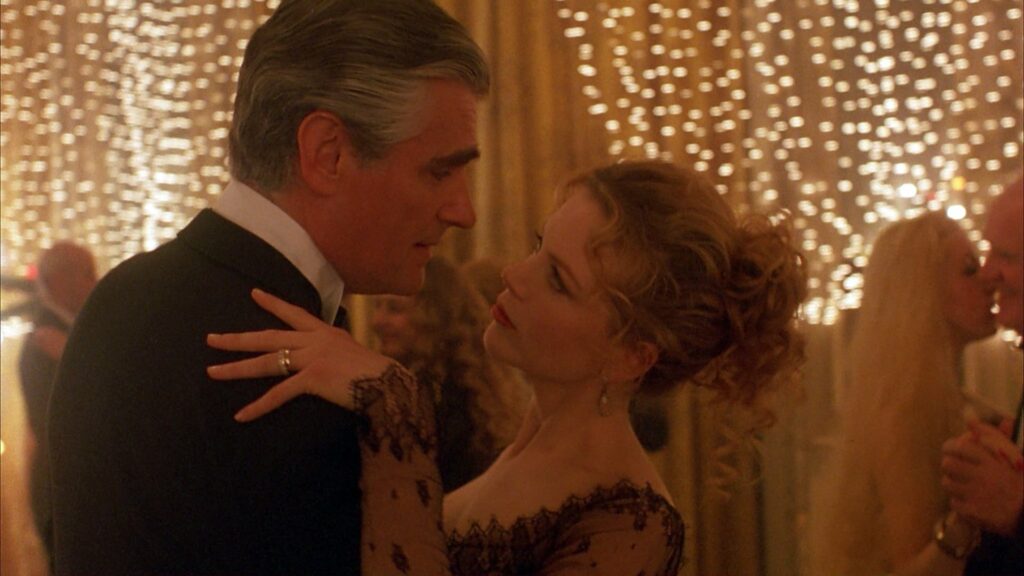
• Lesson on Power and Manipulation: Sandor represents the archetype of the seducer—someone who uses charm, wealth, and manipulation to bend others to their will. His role in the narrative is to challenge Alice’s moral boundaries, enticing her into an affair while exposing the power dynamics between him, Alice, and Bill. Szavost offers a model of masculine power that is not just based on desire but on control and influence.
• What Alice Could Learn: From Szavost, Alice could learn about the darker side of human desire—how power, manipulation, and control can shape relationships. Szavost’s presence might also suggest that the boundaries of fidelity are not as rigid as they seem, and that what appears as freedom or self-expression may come with consequences, exploitation, or a loss of self-respect. Alice might learn to reflect on the nature of power within relationships and whether her choices are driven by genuine desire or external influences.
2. Bill Harford: The Struggling Everyman
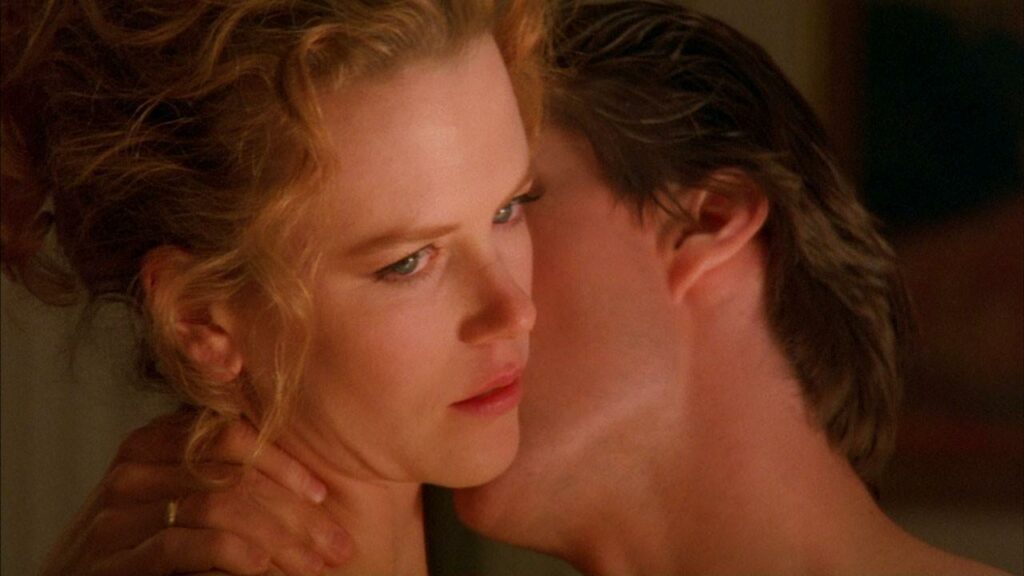
• Lesson on Stability vs. Desperation: Bill represents the archetype of the typical, middle-class man, who is secure in his family life and career but is challenged by his own desires and moral struggles. He is conflicted—caught between a stable family life with Alice and the temptation of exploring forbidden desires. His journey reveals how an ordinary man, when faced with temptation, can become consumed by curiosity and insecurity.
• What Alice Could Learn: Bill’s journey exposes the vulnerabilities inherent in traditional, conventional relationships—how even the most stable partnerships can be threatened by curiosity, fear, and unspoken desires. Alice might learn that stability in a relationship is fragile and requires active trust and transparency, but also how questioning one’s desires and boundaries is a part of being human.
3. The Sailor: The Outsider’s Desperation

• Lesson on Freedom and Consequences: The sailor embodies a carefree, rebellious spirit, living outside societal norms and expectations. His life represents the pursuit of freedom, immediate gratification, and a rejection of traditional moral boundaries. For Alice, the sailor’s influence could signify the temptation to live without constraint or responsibility, perhaps representing the allure of indulging in desires without worrying about societal or relational consequences.
• What Alice Could Learn: Alice might be drawn to the sailor’s sense of adventure and freedom, but his lack of commitment and connection could also expose the emptiness that comes with a life led purely by desire. This teaches her the tension between freedom and the need for deeper emotional connection and security.
My short analysis
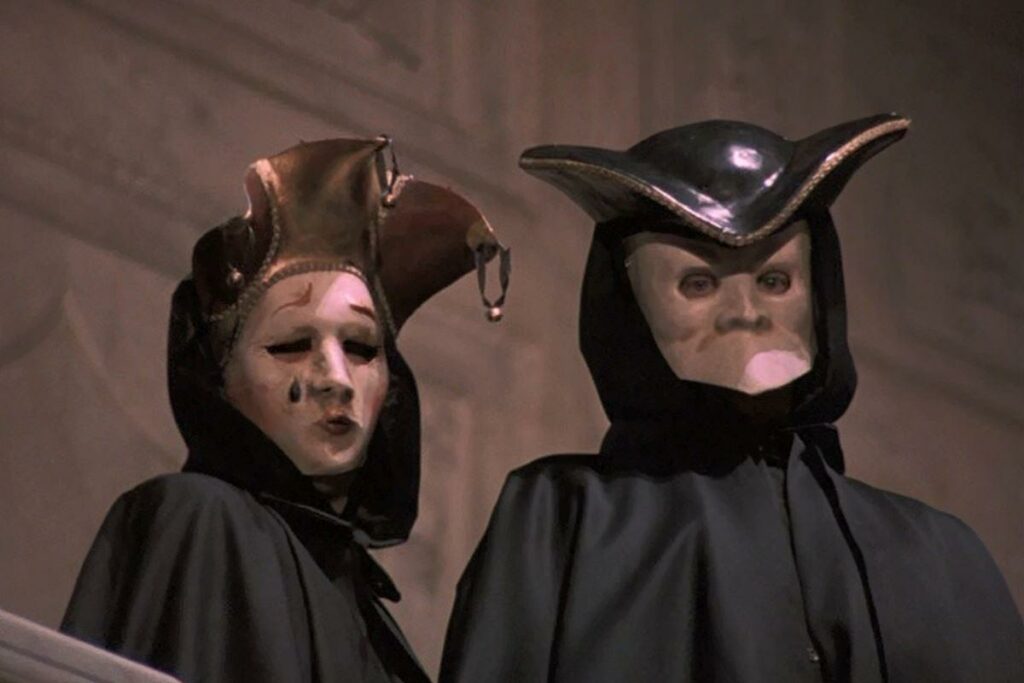
While many of the themes presented are grounded in reality, I believe Stanley Kubrick overlooked a crucial aspect. Moral relativism not only undermines traditional ethics, but it also erodes meaning itself. As a result, such secret societies may feel an incessant need to push the boundaries of their experiments in search of new sensations or emotional experiences as viewed in the orgy and overdose scenes.
Such a society would also struggle to remain cohesive, as individuals would continually compete for power and status, resulting in constant internal conflicts and betrayals. Secrecy would likely be used as a tool for control, a dynamic observed in cases like Epstein and Diddy.
While the idea of the masked ball is intriguing in theory, in reality, fame, power, and status are less about anonymity and more about using them as leverage for pleasure and ego gratification as seen in the Nth Room case.
An intriguing question to consider is whether, after gazing into the abyss and confronting oneself, one can return to normality after transcending traditional morality. Would this profound shift lead to their destruction via nihilism, or could they sustain these beliefs while still preserving meaning in their life?
Abundance, often associated with material wealth and endless opportunities, can simultaneously be both a blessing and a challenge when it comes to finding meaning in life. While having access to more resources and choices can provide comfort and freedom, it can also lead to a sense of emptiness or existential confusion.
True meaning, then, may lie not in the accumulation of wealth or experiences, but in the ability to find purpose and value in what we already have, forging deeper connections and understanding amidst the noise of excess.
Conclusion
In summary, Eyes Wide Shut functions as a psychological thriller that intricately deconstructs concepts of intimacy, honesty, and the societal masks people wear to protect their true selves. Kubrick’s film invites viewers to question not only how well they know themselves and their partners but also to confront the uncomfortable and often repressed aspects of human desire that lie beneath the surface of everyday life.
By comparing the three men in Alice’s life, we gain insight into how individuals navigate the struggle between desire, morality, and power. Szávost embodies those who can transcend traditional moral boundaries without consequence, Bill represents the everyman torn between his desires and moral constraints, and the Sailor is an outsider driven purely by impulse, free from the complexities of elite power or the moral dilemmas that weigh on Bill.
The contrast between these characters underscores the varied ways people handle desire, power, and the quest for meaning in a world where morality is often fluid and negotiable.
The film’s open-ended nature compels audiences to reflect on their own vulnerabilities and the dark complexities of the human psyche. By leaving key themes deliberately ambiguous, Kubrick challenges viewers to interpret the subtle messages about human nature, morality, and the potential darkness that resides within us all, encouraging a deeper exploration of desire, secrecy, and self-awareness.


GIPHY App Key not set. Please check settings